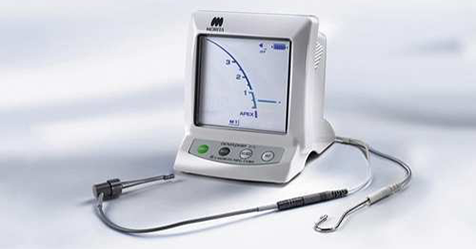
The study and the treatment of pulp constitute a branch of dentistry called endodontics. Endodontic specialists receive 2-3 years of specialized training that is in addition to regular dental school. Diagnosis of tooth pain and root canal treatment are covered under this specialty. Endodontists are masters at saving diseased teeth, and they require modern equipment such as apex locators for this.
What are apex locators?
These electrical instruments are used to measure the length of the root canal through the apical foramen’s position and resistance of the surrounding material. It is very important to correctly determine the tooth length for the sake of efficient endodontic therapy. All apex locators come with two electrodes- one is connected to the patient’s body and the other to the endodontic instrument. Based on quality, a dentist or a dental institute can select the device based on apex locator price.
Important characters of apex locators
- Determining the length of the root canal is one of the most important steps in endodontic treatment
- The apex locators find the apical foramen with the help of an electrical circuit
- The accuracy of modern apex locators is more than 90%. However, they do have a few limitations such as duct shape, minimizing substances within the duct, and others.
- For immature teeth that have open apexes, these locators may not give accurate results
- They are available with clear and bright LCD screens to take a clear look at the root canal
- There are different types of locators as per different principles to determine length. The devices are grouped as per 1st, 2nd, and 3rd generations.
- They must be used with care in patients having cardiac pacemakers
- Although it is necessary to be trained in using apex locators, they are very user friendly
Today’s apex locators are able to come up with accurate results despite blood, saliva, or any other irritant. Once the locator gets to the maximum length of the root canal, there’ll be a buzz, flashing light, beep, or all of these from the device. There are some which display images of the tooth in question on a monitor.
How to troubleshoot an apex locator
Just like any other electronic device, the apex locator too may start giving problems at a certain time. Here are some tips to help in solving these problems without summoning the experts:
- Use the largest possible endodontic file– If the file sizes are increased to 15 or 20, it will give a steady reading for an accurate measurement
- Keep the file away from crowns or metal fillings– The file needs to be away from sides of the tooth, crowns or metal fillings while taking the reading. In case the locator is beeping too much, it means something is wrong. The file just may be in contact with the metal during use.
- Keep the canals dry– Not only will a dry canal give an accurate reading, but it will also prevent the machine from beeping all the time. There should be no EDTA (Ethylene Diamine Tetra Acetic acid), sodium hypochlorite or pus in the canal.
- Use a radiograph instead– This is an old school method of obtaining the length of the root canal. A radiograph will also give you information about tooth anatomy. For a dentist who has just started with root canals, the best way forward is to use both radiographs and apex locators. This will be very helpful in understanding tooth anatomy better.
- Remember to charge– Unless the apex locator has a decent amount of charge, it will not function accurately. Rechargeable batteries may be a suitable long term option.
- Use it throughout the procedure– If the apex locator is used during the entire procedure, it will ensure that conditions inside the mouth do not change over time. At times patency may be lost due to blockage as a result of debris.
Always know how your apex locator will send a notification when the end of the canal arrives. It is important for an endodontist to nail this, or else the changes of root canal failure are high. In addition, the patient is likely to have problems at a later date.
Aim of root canal treatment
The ultimate objective of root canal treatment is to get rid of oral infection that could lead to inflammation of the periodontium. Without correct determination of cleaning, shaping, and obturation, there could be problems with prognosis. The Working Length (WL) determination at the time of root canal therapy has been largely assisted by these apex locators.
When apex locators were first launched, they faced a number of reliability and accuracy-based issues. Over the years, the technology has progressed to a great extent.
From the patient’s point of view, endodontists strive to have greater accuracy, simplicity, and generate lesser pain. Better technology will always take the specialists to greater heights.